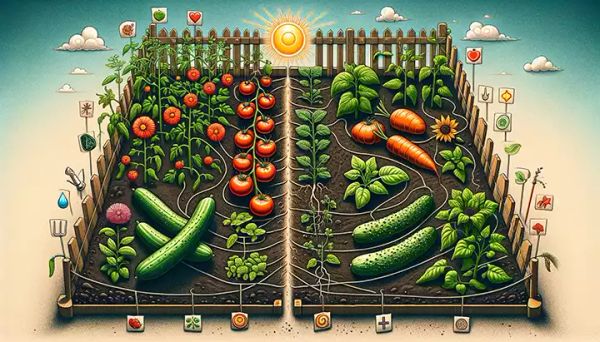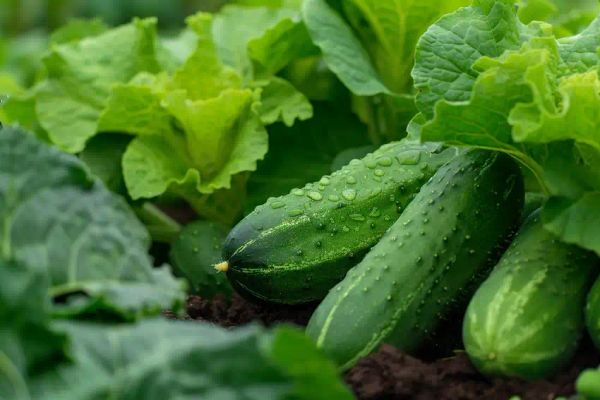In the fascinating world of gardening, not all plants get along. Companion planting is an ancient practice that reveals how certain plant combinations can either support or hinder each other’s growth. Let’s explore the secrets of companion planting and discover why tomatoes and cucumbers should be grown separately.

Understanding Companion Planting
Companion planting is a strategic gardening technique that involves placing different plants next to each other to maximize benefits in the garden. By controlling pests, encouraging pollination, and creating habitats for beneficial insects, gardeners can enhance the productivity of their crops. This approach is based on principles of ecological balance and biodiversity.

The Tomato and Cucumber Rivalry
Tomatoes and cucumbers, these beloved summer vegetables, do not make good garden companions. Here’s why:
Differing Water Needs: Cucumbers require consistent moisture to stay juicy and sweet, while tomatoes prefer drier soil conditions once they are established. Overwatering tomatoes to meet the needs of the cucumbers can lead to root diseases caused by waterlogged soil.

Space and Light Competition: Cucumbers are vigorous climbers or sprawlers that can overshadow tomatoes, reducing their access to vital sunlight. Sunlight exposure is crucial for healthy fruit development.
Risk of Disease Transmission: Both tomatoes and cucumbers are susceptible to diseases, such as powdery mildew and bacterial wilt. Growing them in close proximity can accelerate the spread of these diseases.

Ideal Companions for Tomatoes and Cucumbers
For Tomatoes:
- Basil: Enhances the flavor of tomatoes while repelling flies and mosquitoes.
- Marigolds: Keep nematodes and other garden pests away.
- Carrots: Help improve soil quality by loosening it, allowing better airflow and water circulation around tomato roots.
For Cucumbers:
- Radishes: Act as a natural deterrent against cucumber beetles.
- Sunflowers: Provide a sturdy trellis for cucumber vines and attract pollinators.
- Lettuce: Benefits from the shade provided by the cucumber plants, keeping the root environment cool.
Implementing Companion Planting in Your Vegetable Garden
To successfully implement companion planting in your garden, consider the following tips:
Plan Your Garden Layout: Take into account each plant’s specific needs, such as sunlight, water, and space. Arrange companion plants to fulfill these needs without causing competition.
Rotate Crops Annually: Avoid planting the same crop family in the same location year after year. This helps prevent the buildup of diseases and pests.
Observe and Adapt: Keep a close eye on the health and growth of your plants. If certain combinations are not thriving, be flexible and adjust your planting strategy accordingly.
Understanding the dynamics between plants, such as the relationship between tomatoes and cucumbers, is the key to successful gardening. By practicing companion planting, you can create a diverse, productive, and harmonious garden ecosystem. Remember, knowing which plants to pair together is just as important as knowing how to plant them. Happy gardening!




